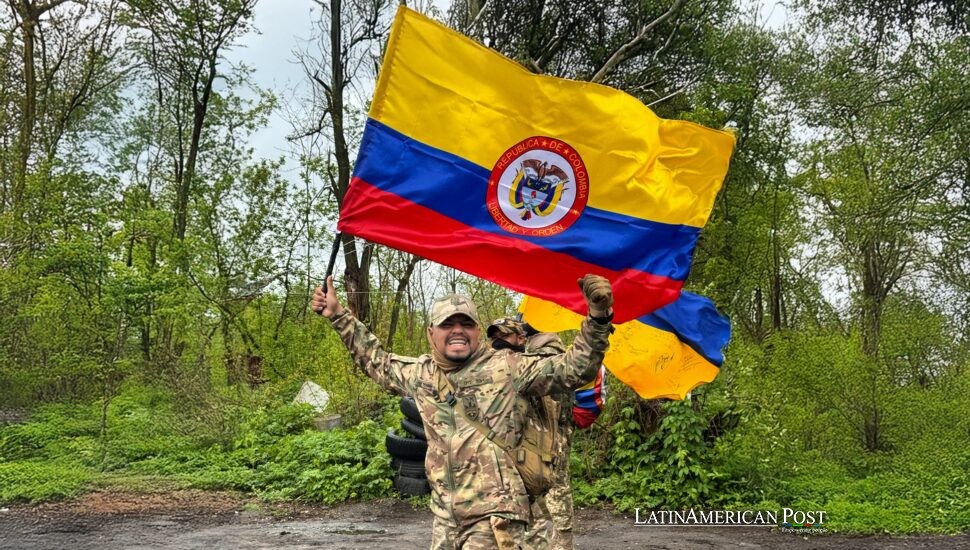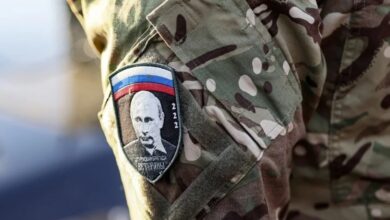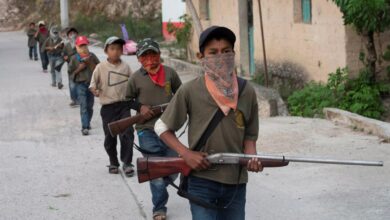From Colombia to Kyiv: The War in Ukraine Recruits Far from Home

News that a charter flight carrying fifty Colombian ex-soldiers is en route to Ukraine has jolted regional security analysts, raising urgent questions about how economic desperation and combat experience are turning Latin America into a new workforce reservoir for Europe’s deadliest war.
From Bogotá Bus Terminals to the Donbas Trenches
The men packing their duffel bags this week in Bogotá are not soldiers of fortune in the classic sense—just former corporals, sergeants, and cops trying to make rent. Most are in their late 20s or 30s. They’ve fought in jungles, not in frozen fields. And now they’re boarding a plane to Warsaw, with a second leg overland to Ukraine.
What’s drawing them? Money, mostly.
According to Colombian intelligence sources, the recruits were promised more than $3,000 a month—roughly ten times the salary of a private in the Colombian military—and potential paths to European residency if they survived.
That promise is more than tempting. Since Colombia’s 2016 peace deal with FARC, the military has slimmed down. Thousands of trained veterans were left behind to navigate a weak job market and national unemployment hovering near 9 percent.
“You’ve got men with ten years of combat experience selling cellphone cases on the sidewalk,” said one defense analyst in Bogotá. “They’re not being lured by ideology. They’re being left with no good options.”
A 2023 study by the University of St Andrews’ Centre for the Study of Terrorism and Political Violence backs that up. Economic desperation—not politics or patriotism—is now the top motivator behind what researchers call “transnational soldiering.”
Volunteer, Mercenary, or Something in Between?
Legally speaking, the ground is murky.
Colombia’s laws don’t forbid citizens from enlisting in foreign armies—as long as they’re not fighting against Colombia or taking orders from designated criminal groups. The country also never signed the 1989 U.N. Convention on the Ban of Mercenary Activities, which criminalizes combat solely for profit.
Still, the legal lines aren’t clear. If an intermediary collects a cut of the soldiers’ salaries, or if the recruits sign short-term private contracts instead of integrating into official military units, they could fall under domestic laws prohibiting “service to illegal armed groups.”
Eugenio Cusumano, a professor of international law, notes that Ukraine’s International Legion of Territorial Defense technically operates under state command. That makes its foreign recruits, at least in Kyiv’s eyes, lawful combatants—not mercenaries.
But Colombia’s foreign ministry isn’t ready to endorse anything. Its only comment so far: travelers do so at their own risk.
The ambiguity stands in contrast to Russia’s rigid stance. Moscow labels all foreign fighters backing Ukraine “fascist mercenaries” and has refused to grant them prisoner-of-war protections.
The Regional Shockwaves Are Just Beginning
As word of the charter flight spread, so did the diplomatic unease.
Latin America’s post-Cold War doctrine of “active abstention”—a proud neutrality reinforced by painful memories of proxy conflicts—has already come under strain. In 2022, countries such as Costa Rica, Brazil, and Argentina voted at the U.N. to condemn Moscow’s invasion but stopped short of providing military support to Kyiv.
Now, with human capital heading to the front lines, the political balancing act is becoming increasingly challenging.
Russian embassies in Caracas and Lima wasted no time condemning what they called the “export of violence,” hinting at diplomatic retaliation.
Meanwhile, Ukrainian recruiters have quietly stepped up efforts to attract Spanish-speaking soldiers to integrate better multilingual units already hosting Americans, Georgians, and Belarusians.
According to an upcoming article in the Journal of Strategic Studies, this growing Latin American footprint could reshape more than battlefield dynamics—it could also influence postwar migration, with former fighters settling in Europe or returning home with skills and trauma that ripple across borders.
What Happens When They Come Back?
The bigger question is what awaits them if—and when—they return.
Colombia has been here before. In the early 2000s, hundreds of ex-soldiers signed private security contracts in Iraq and Afghanistan. Many came home changed—some were struggling with untreated PTSD, others had skills that quickly found a home in criminal networks.
A 2021 survey by Universidad del Rosario found that 32 percent of Colombians who worked in foreign conflict zones reported symptoms of post-traumatic stress—three times the national veteran average.
Clinical psychologist Sandra Valencia warns that trench warfare in Ukraine is unlike anything these men have faced. “They’ve fought guerrillas in forests, but not artillery barrages, or suicide drones, or weeks of shelling,” she said. “The psychological toll could be far worse.”
Civil society groups are urging the government to act now—proposing reintegration plans modeled after Colombia’s post-FARC demobilization program. That means mental health screenings, job training, and close monitoring to prevent ex-combatants from being recruited into drug cartels or paramilitary groups.
“If we don’t plan now,” said Valencia, “we’ll be dealing with the consequences for years.”
A Dangerous Flight—and an Even Riskier Return
The fifty men preparing to board their flight this week are chasing paychecks, yes—but also purpose. Some see it as redemption. Others see no better option.
Their journey may look like a blip. But it’s the tip of something larger, a test of whether Latin America can remain on the sidelines of a war that has already touched its economies, its airspace, and now, its people.
Also Read: Ecuador Solstice Warriors Dance Harvest and History in Cotacachi
What happens next will depend not just on the soldiers—but on the governments, judges, and communities they leave behind.
Because no matter how far the front line seems, wars always find a way home.




